Dear readers, here’s the last installment of my three-part series about Shiga Prefecture. Here you can read Part1 and Part 2.
According to Japan’s Law for the Protection of Cultural Properties, Cultural Landscapes are formed by the interaction of natural and human factors. They are essential for understanding the livelihood and work of the Japanese people.
I talked to Professor Kinda Akihiro, a leading figure in humanities and historical geography, about the prominent role played by Lake Biwa in the history of Japan and Shiga Prefecture in particular. Professor Emeritus at Kyoto University and Director of the Rekisaikan Museum, Kinda sensei has extensively researched the entire area of Lake Biwa and has recently published a book on the subject: Biwako: Mizube no bunka-teki keikan (Lake Biwa: Cultural Landscapes along the Waterfront).
We cannot talk about Shiga Prefecture without talking about Lake Biwa. What role has it played in the history of that region and why is it so important?
First of all, Lake Biwa is Japan’s largest lake, occupying approximately one-sixth of Shiga Prefecture’s total area. It is also one of the world’s oldest lakes, with a history dating back over four million years. Its surrounding area is rich in nature and historical heritage, and the lake is essential to Japan’s ecosystem and supports many plant and animal life. It is also extremely important to the human population; its abundant water resources have greatly benefited agriculture and fishing.
An important distinction is that while Lake Biwa is so vast that it resembles the sea when viewed from the shore, its environment is entirely different. Japan’s coastline requires extensive protection from tsunamis and powerful waves, leading to the construction of roads and concrete breakwaters, which have contributed to the erosion of traditional ways of life.
In contrast, although certain areas of Lake Biwa have stone walls to guard against strong waves, the absence of a need for large-scale disaster prevention has allowed the preservation of traditional lifestyles connected to the lake.
A road was built around the lake as part of the Lake Biwa Comprehensive Development Project, and it also serves as a lakeshore embankment. However, it’s not very high, and beyond the road there are pine forests and small sandy beaches that connect to the water. Unlike settlements facing the open sea, the area is not separated by huge breakwaters or roads, so the basic shape has not changed much.
Last but not least, Lake Biwa has been a key communication node since ancient times, supporting the transportation of goods and the exchange of people. For example, there was once an important route between Shiotsu in the north and Otsu in the south, thus connecting the Hokuriku region and Kyoto. Furthermore, the Seta River, the only river flowing out of Lake Biwa, is an important route connecting Osaka and Kyoto.
Shiga Prefecture has seven designated Important Cultural Landscapes. This is the second highest number among all Japanese prefectures, after Kumamoto, which has ten. Moreover, six of those seven landscapes are located along Lake Biwa. What kind of places are they?
As I said, on the shores of Lake Biwa, there is little risk of waves or tsunamis. Also, there are very few houses, so the traditional scenery has remained intact. That is one of the reasons why so many landscapes were selected. When I wrote my book, I focused on livelihood on the waterfront and tried to learn about those human settlements. Several religious ceremonies are repeated around Lake Biwa, and they can be clearly traced to ancient cultures. Even today, thanks to their survival, we can imagine how people lived in ancient times. Few areas in the whole country remain so well organized.
To give you a few examples, Ogi Village, situated in the foothills of Mount Hiei, is known for its scenic terraced rice fields, farmhouses, and stone walls. It is a beautiful example of how traditional agricultural landscapes can be preserved and maintained, providing insight into the cultural heritage and history of the area.
Then there is Ogoto Onsen, located on the shores of the lake, which is a renowned hot spring town. It has been a popular destination for its therapeutic waters since ancient times, but the hot springs were officially developed in the early 20th century.

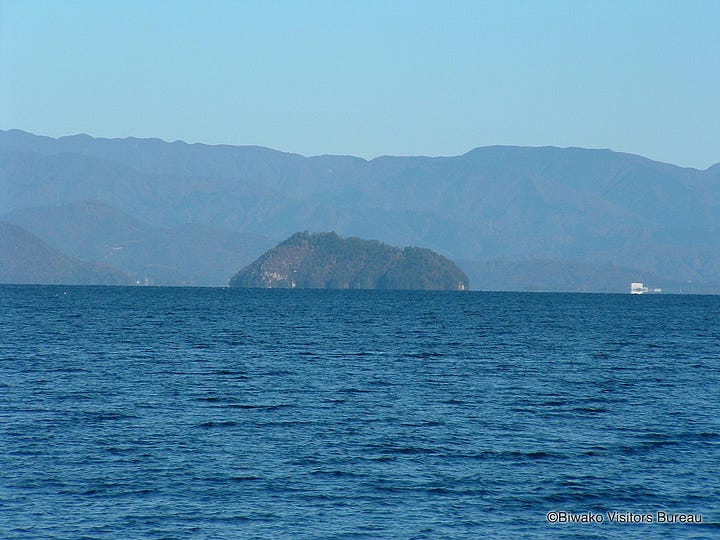
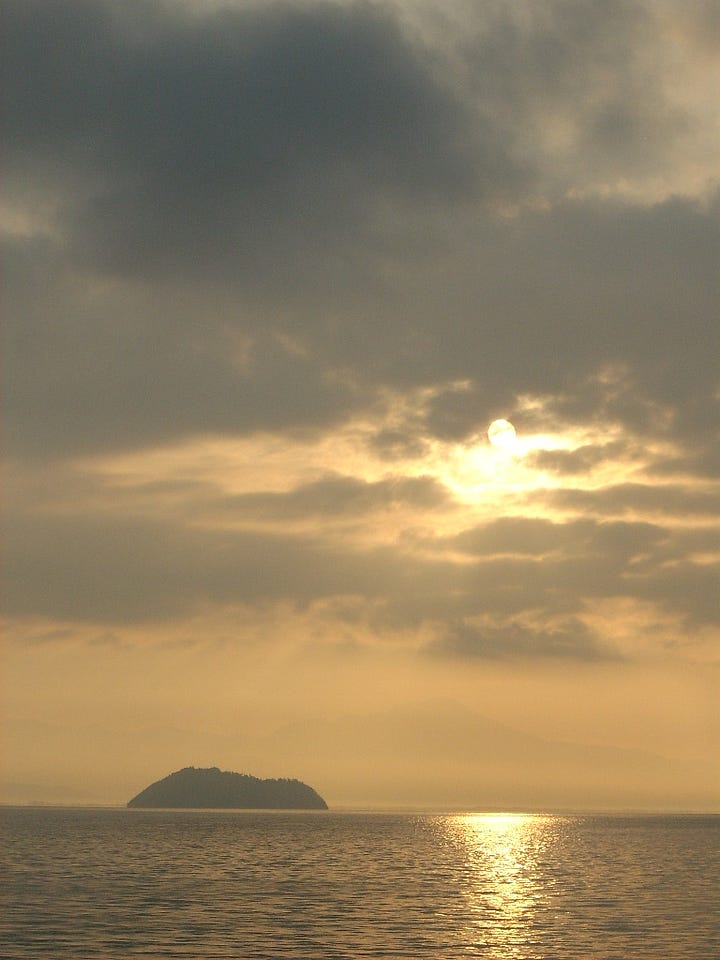
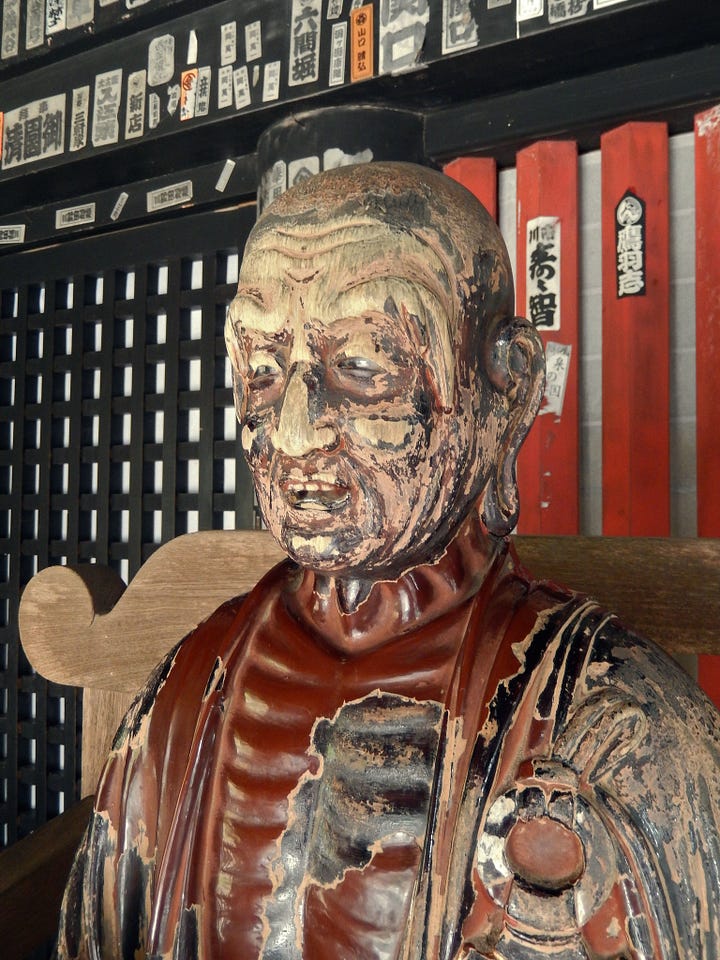
A popular tourist attraction is Chikubushima, a small island located in the northern part of Lake Biwa. Apart from its unique flora (including ancient cedar trees and various seasonal flowers) and stunning views of the lake, the island is home to several important cultural assets, including the Karamon, a beautifully decorated gate that is designated as an Important Cultural Property. Though it’s very small, it has two important religious sites: Chikubu Shrine has been a site of pilgrimage for centuries and is mentioned in classical Japanese literature, including The Tale of Genji and The Pillow Book. Also, Hogonji is part of the Saigoku Kannon Pilgrimage, a famous pilgrimage route dedicated to the Bodhisattva Kannon.
You have been researching the area along the banks of Lake Biwa for a long time. What kind of traditional lifestyles have survived to this day?
Several styles of working directly on Lake Biwa are still being practiced. One is fishing. There are still many fishermen in the region, and their fishing methods are very unique. In particular, they use a type of fixed net called eri. Eri-fishing is a traditional method with a history of more than 1000 years that was even celebrated in Japanese poems written during the Heian period. It’s a wait-style fishing method that skillfully utilizes the ecology of the migrating fish in Lake Biwa to guide them into tsubo or collection areas. This method allows the fishermen to catch as much as they need without depleting the lake’s limited resources. The idea of resource conservation that has been in place since the Edo period includes restrictions on the installation of eri-fishing and the creation of prohibited fishing areas.
Then, there are aquatic marshes on the lake shore rich in yoshi, which is long, thin Japanese silver grass a little different from what you find elsewhere in Japan. This grass thrives in the wetlands and waterways around the lake, contributing to its lush green landscape. Historically, yoshi has been an integral part of the local ecosystem and culture, particularly in the Omi-Hachiman region. This is an important habitat as yoshi helps maintain the health of wetlands and waterways by preventing soil erosion and providing habitat for various wildlife species. The yoshi industry is still thriving. Yoshi is used to make sunshades and roofs for farmhouses. Also mats, baskets, and other woven items.
On the other hand, have there been any significant changes in the lakeside landscape?
In terms of traditional waterside life, the drastic decrease in the number of naiko due to land reclamation in the 1930s to increase food production has probably had the biggest impact. A naiko (literally “inner lake”) is a lagoon formed by sediment accumulated by coastal currents. In the Meiji period, there were more than 100 such lagoons around Lake Biwa.
The naiko was long connected to the people who made their living from agriculture and fishing. For example, it could be used freely regardless of the rice yield. Also, if you set up a small fishing net, you could catch enough fish to eat at home, and the reeds and other grasses that grew in the naiko were cut and used as cattle feed and fuel.
What impact has the drastic decrease in naiko had on the environment?
It is true that many lagoons, which constituted a strong link between people's lives and occupations and Lake Biwa, were lost, and the construction of a road around the lake has slightly weakened the connection between the lake and the people, but this doesn’t mean that the connection with the water has been completely lost. In areas where the naiko have survived, there are businesses that dry cut reeds and use them for thatched roofs and to make torches for temple and shrine events. The use of groundwater and surface water still remains, such as the famous kabata in Harie village, Takashima city.
The fundamental thing to keep in mind is that it's okay to change as long as this does not cause disharmony. One of the major elements of a cultural landscape is that it tells the story of people's lives and occupations, so it changes along with people's lives. As long as people live there, it is bound to change gradually.
On the other hand, what goes against the philosophy of the cultural landscape is, for example, building a new high-rise apartment building on the lakeshore next to traditional buildings and scenery. Luckily, the many high-rise buildings that have been built recently are mainly concentrated in Otsu, Shiga’s capital, which is in the southernmost part of the lake. Many plans for hotels and apartments have been made there, but the rest of the lake has been mostly left untouched.
What relationship exists between Mount Hiei and Biwa Lake culture?
Mount Hiei is a sacred site for Japanese Buddhism and is especially famous for being home to Enryakuji, the head temple of the Tendai sect. For many years, this place has played an important role as a training ground for ascetic monks. The monks of Mount Hiei have spread the teachings of Buddhism and deepened their involvement with the local community while benefiting from the blessings of Lake Biwa. In particular, during the Middle Ages, the warrior monks of Mount Hiei were active in the defense of the region and had great political influence.
Another important temple in the same area is Saikyoji. It became very famous after a monk named Saisen became the temple’s head priest the mid-15th century, and the temple expanded its control over the region. Then, after Oda Nobunaga burned down the temple in 1571, Akechi Mitsuhide, who was Nobunaga's vassal at the time, took responsibility for its reconstruction and used the Sakamoto area, where Saikyoji is located, as his base. He later betrayed Nobunaga which led to his death.
I’m ending this post with a few more picture of Saikyoji, one of the highlights of my trip to Shiga.
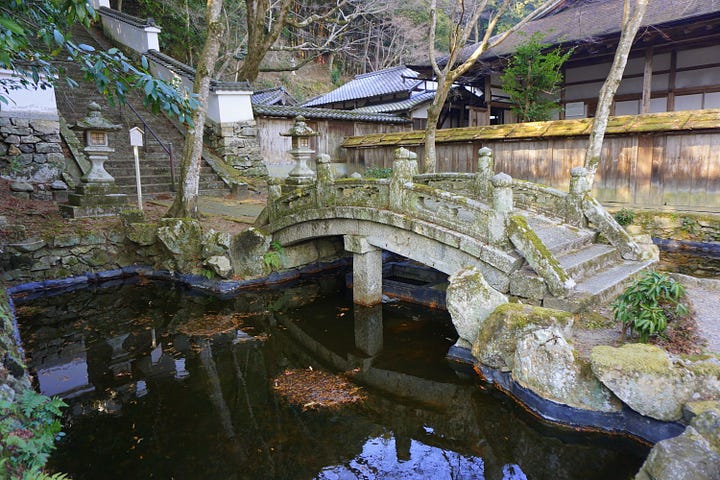
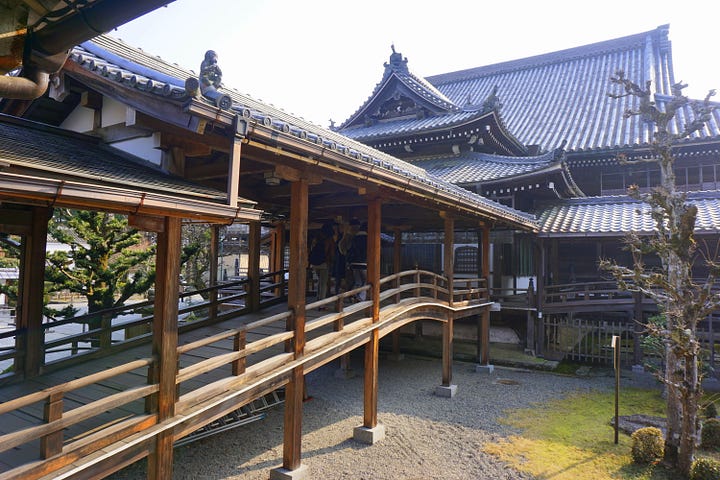

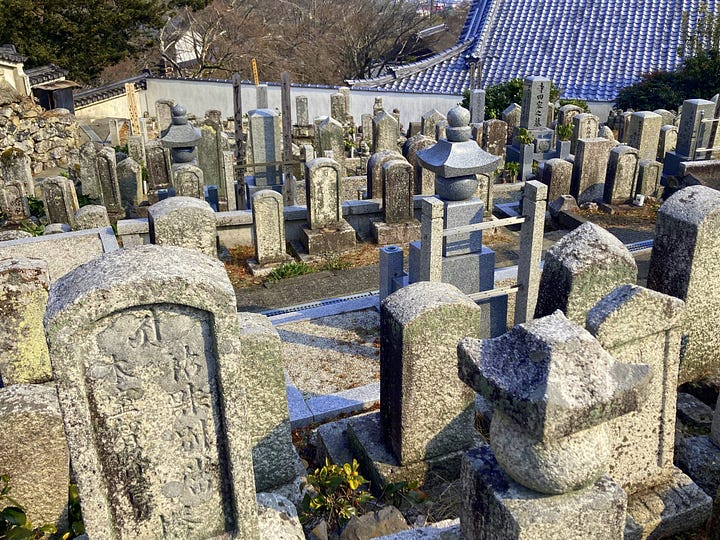

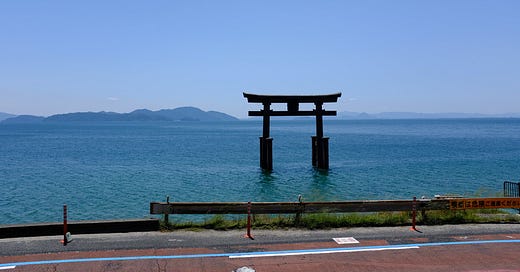



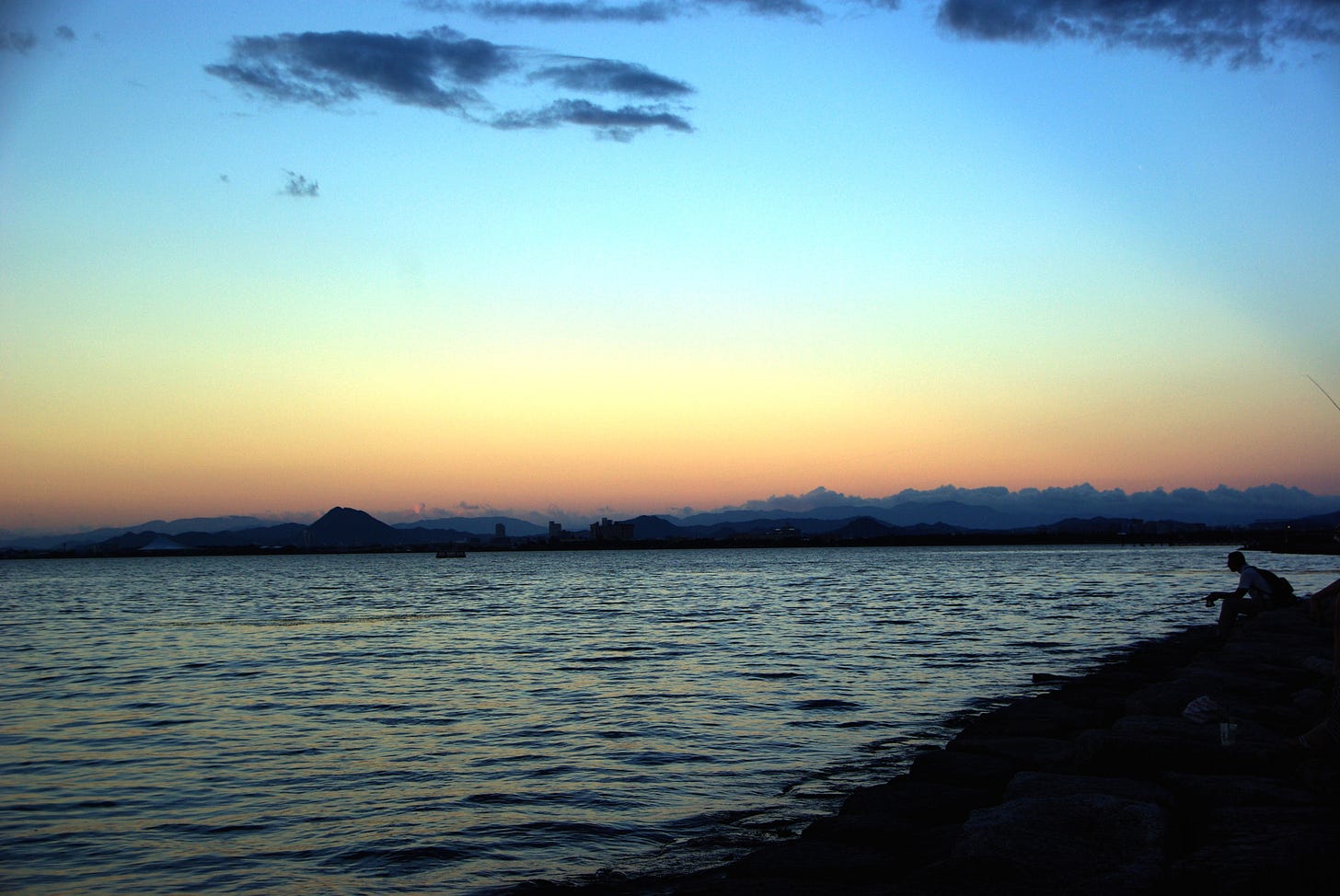
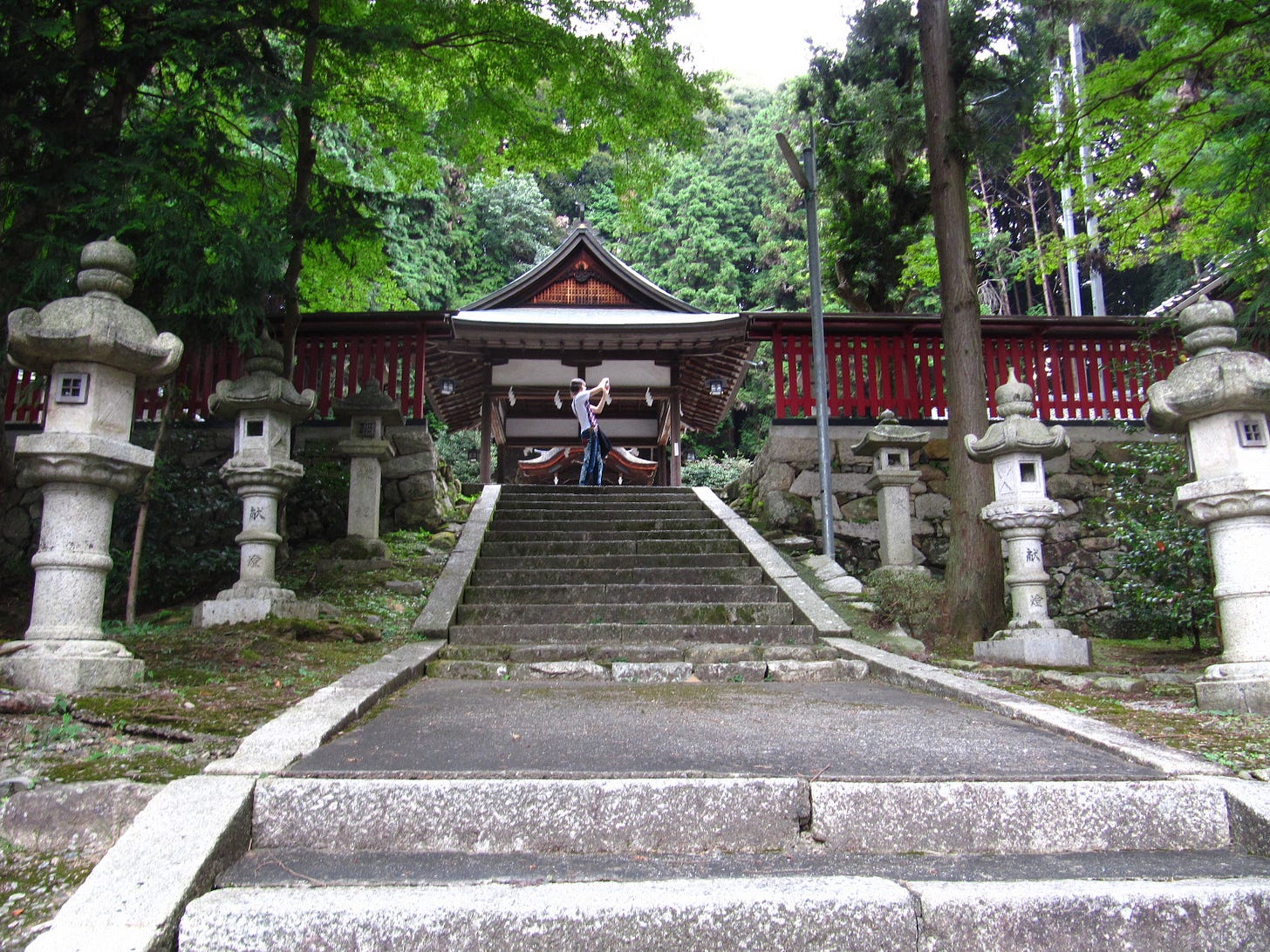
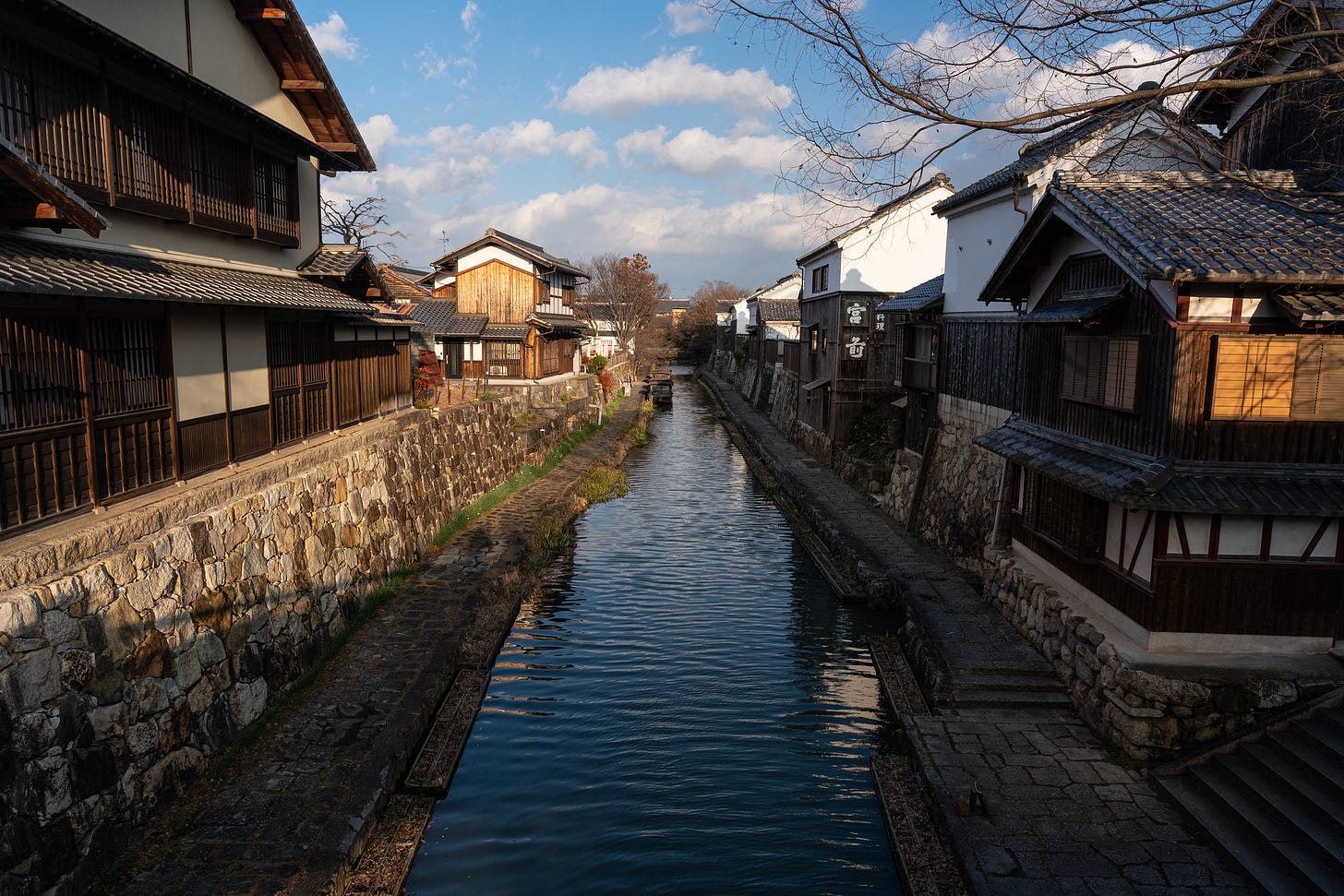
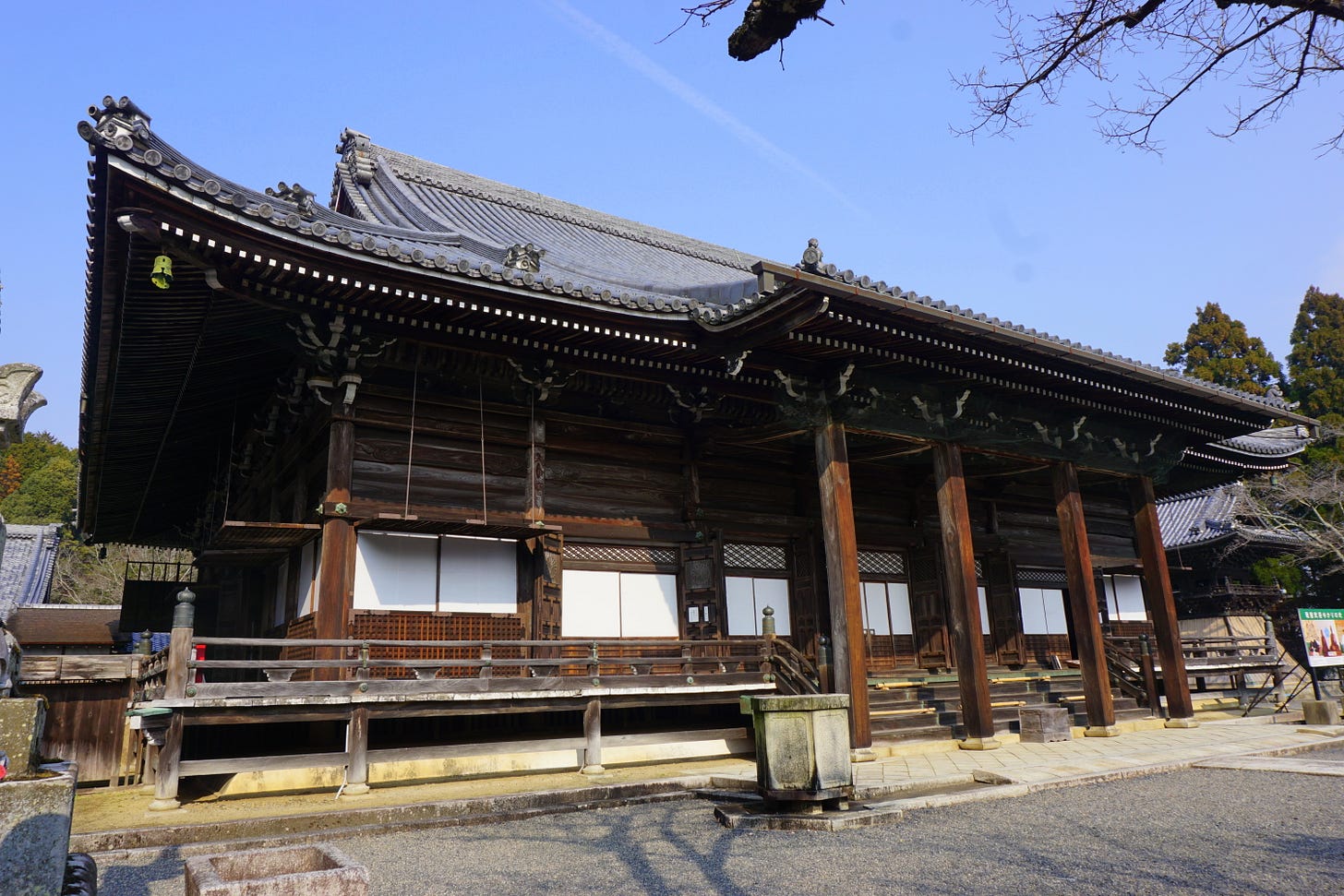
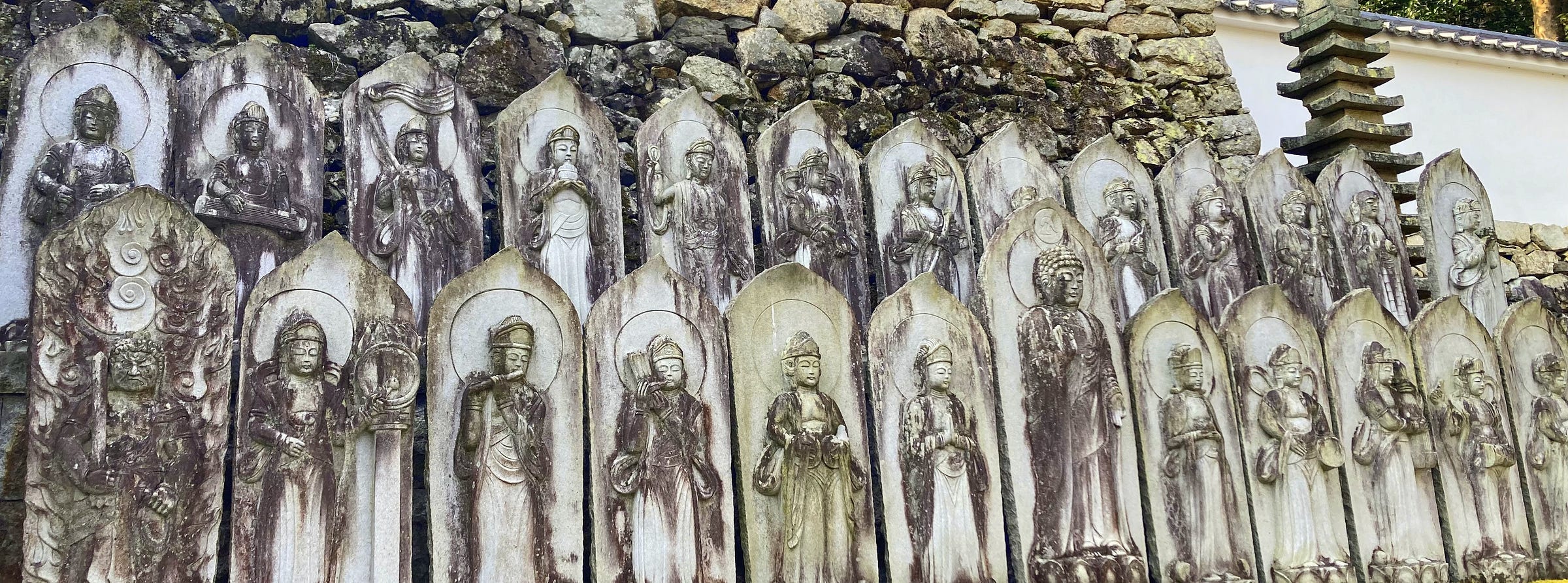
Thank you, interesting. I visited Ogoto onsen at the end of one my hikes. Nice place. Plus nearby you can spot swimming nutrias.
There are some stunning places in Japan that are not related to Tokyo or other touristy hot spots. You just need Gianni to write about them so we know where to go!